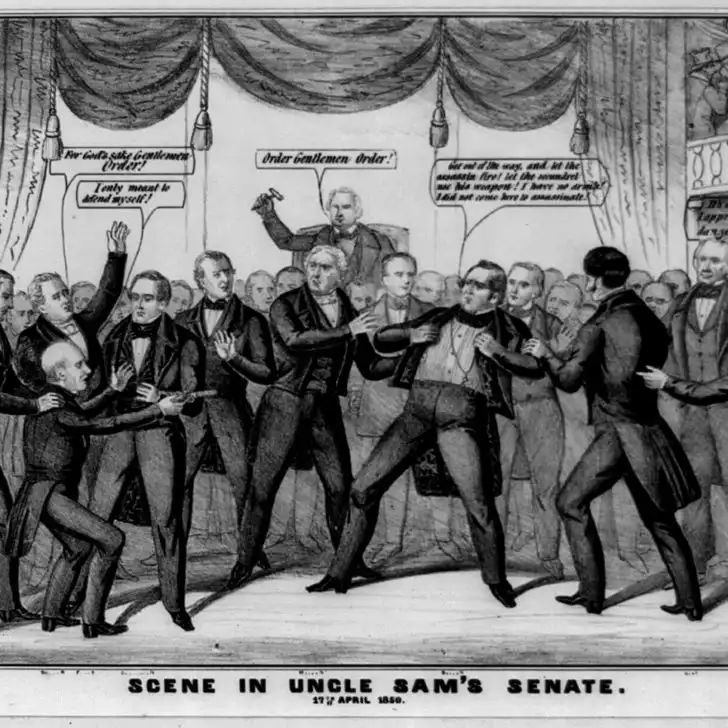A floor fight is an argument that threatens to derail either a convention or a congressional proceeding.
Most of the time, floor fights are non-violent; the fighting is verbal. However, American history also includes some memorable incidents in which floor fights became physical.
In the past, when brokered conventions were the norm, floor fights often broke out in the midst of a party convention; typically, they arose when delegates disagreed over the contents of the party’s platform.
However, it has now been 70 years since the United States saw a brokered convention.
Today, “floor fight” usually refers to a fight on the Senate or House floor.
In theory, of course, there should never be any fights at all in Congress, especially in the Senate.
Thomas Jefferson wrote a “Manual of Parliamentary Practice” in which he explained the importance of decorum in the Senate:
No one is to disturb another in his speech by hissing, coughing, spitting, speaking or whispering to another; nor to stand up or interrupt him; nor to pass between the Speaker and the speaking member; nor to go across the [Senate chamber], or to walk up and down it, or to take books or papers from the [clerk’s] table, or write there.
In reality, of course, Congress members have not always lived up to Jefferson’s ideal.
In 1902, a physical fight broke out between the junior and senior senators from South Carolina. The junior senator, John McLaurin, accused the senior senator, Ben Tillman, of “a willful, malicious, and deliberate lie,” which led Tilman to punch him in the jaw. Senators rushed to separate the men. The fight did not last long, but remains part of Senate lore.

The House of Representatives has a rowdier history.
On February 6, 1858, a huge brawl broke out during a debate of the Lecompton Constitution, a pro-slavery document which had been proposed as the new constitution for the Kansas Territory. The debate lasted late into the night; at about 2AM, Pennsylvania Republican Galusha Grow and South Carolina Democrat Laurence Keitt first flung words at each other, and then began to fight with their fists.
Dozens of other representatives waded into the fray, with Republicans taking sides against Democrats. At one high point in the fight, two Wisconsin Republicans ripped off the wig of a Democrat from Mississippi.
Most of the time, of course, a “floor fight” amounts to little more than a series of dramatic speeches and a tightly contested vote.
In 2019, for example, the House of Representatives voted to impeach President Donald Trump. The vote took place almost entirely on party lines and was accompanied by impassioned speeches from both sides.
As NBC reported:
As a technical matter, the resolution was a dry set of rules for the public phase of an investigation into President Donald Trump that has been under way informally almost since Democrats took control of the House in January. But on a political level, the floor fight over it was nasty, brutish and relatively short — just over an hour — ending in a nearly perfect party-line vote.